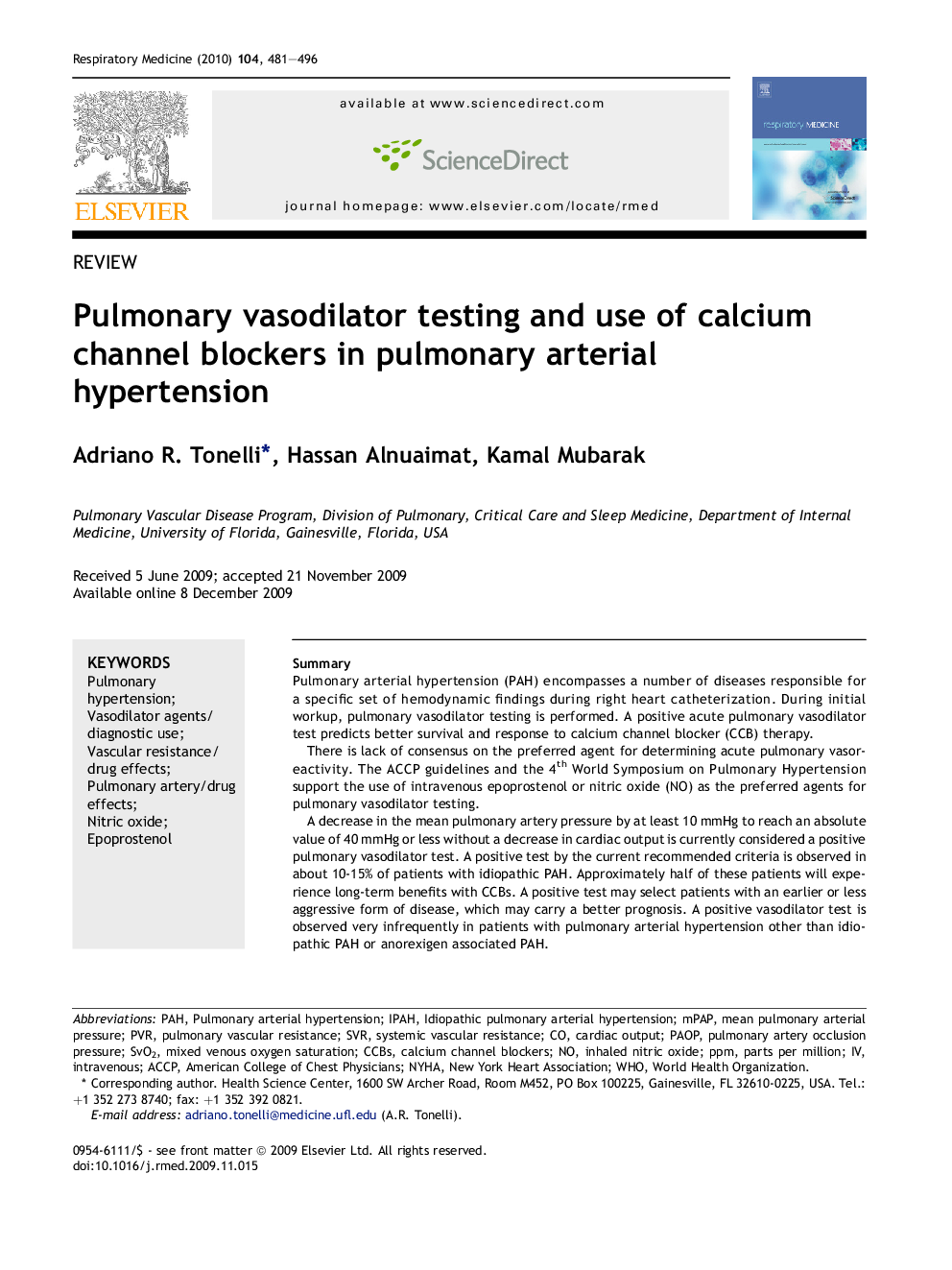| Article ID | Journal | Published Year | Pages | File Type |
|---|---|---|---|---|
| 4210649 | Respiratory Medicine | 2010 | 16 Pages |
SummaryPulmonary arterial hypertension (PAH) encompasses a number of diseases responsible for a specific set of hemodynamic findings during right heart catheterization. During initial workup, pulmonary vasodilator testing is performed. A positive acute pulmonary vasodilator test predicts better survival and response to calcium channel blocker (CCB) therapy.There is lack of consensus on the preferred agent for determining acute pulmonary vasoreactivity. The ACCP guidelines and the 4th World Symposium on Pulmonary Hypertension support the use of intravenous epoprostenol or nitric oxide (NO) as the preferred agents for pulmonary vasodilator testing.A decrease in the mean pulmonary artery pressure by at least 10 mmHg to reach an absolute value of 40 mmHg or less without a decrease in cardiac output is currently considered a positive pulmonary vasodilator test. A positive test by the current recommended criteria is observed in about 10-15% of patients with idiopathic PAH. Approximately half of these patients will experience long-term benefits with CCBs. A positive test may select patients with an earlier or less aggressive form of disease, which may carry a better prognosis. A positive vasodilator test is observed very infrequently in patients with pulmonary arterial hypertension other than idiopathic PAH or anorexigen associated PAH.This article reviews the literature regarding pulmonary vasodilator testing and use of CCB therapy in patients with PAH, while identifying the gaps in knowledge concerning this diagnostic procedure.
